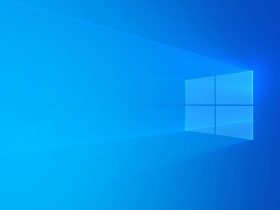The history of browsing refers to a list of web pages visited by a user. It also includes associated metadata. Web browsers store this information locally so that a user can return to previous pages when needed. These files are generally useful when the user has a particular website in mind and would like to see what they looked at there. Here are some ways to find your history of browsing. Listed below are some options for you to find the information you need.
Chrome
Chrome offers several useful features for viewing your history of browsing. This tool lets you see all the sites that you have visited in the past few weeks, and you can also filter and search your history. Go to Settings -> History and select the history tab. A history log will appear after you open the browser. You can click on it to see your browsing history. There are also options to delete selected history records. You can also add header lines to CSV or tab-delimited files.
The history of browsing Chrome is stored for 90 days. Using the History Trends Unlimited extension, you can extend the time to which the history is stored. In addition, the history is stored locally and not shared online. However, you should be careful that the history does not disappear after you clear your browsing data or App data folder. Otherwise, it will be lost forever. However, if you are using a PC with a Google account, you should sign in to your Google account when you visit a website.
Besides the History page, you can also find out which sites you have visited. Chrome also stores details from all websites that you visit. Some of this information helps the browser to speed up your browsing. You can easily clear the history by selecting it from the list. Just make sure that you use a secure browsing session while clearing the history. Then, you can browse the history and search for sites that you have visited recently. You can also delete images that were stored in your history.
To disable browsing history, you need to go to settings in Chrome. If you don’t want the browser to save your history, you can disable it. You can also delete cookies and autofill. These three options are not secure but can still be handy when browsing. And if you’d rather delete your browsing history than store it on Google’s servers, you should use the No History button. Hopefully, this will save your browsing history.
Firefox
Firefox offers the History of browsing option that displays the list of websites you have visited in the past. Firefox also offers an option to view the entire search history. To see your browsing history, launch Firefox and click the Library icon. Then, click on History and choose Show all history. This will show all history for a particular date and time. MozillaHistoryView also supports Firefox 4 (Beta) and allows you to view specific URLs.
However, this feature isn’t perfect and it should be used carefully. Firefox has a tendency to store information on the computer even if you have not logged out of it. Moreover, the browsing history may contain links to websites that have undergone changes. To avoid this, you should delete your history regularly or after each session. Firefox remembers information on all websites that you visit. This information can also be accessible to others, especially if you’re using a public PC.
Fortunately, Firefox also includes a convenient tool to delete the history. If you don’t want to keep track of everything that happens on the web, you can clear the history by clicking on the menu option at the top-right corner of the browser. Firefox also offers a History Library that lets you delete certain entries. The menu option will show you the sites you’ve visited, and you can choose the range you want to delete. The history is also categorized by “Last visited”, and you can select a specific date range to clear. The 404 Not Found section is another option for deleting the history.
In addition to browsing history, Firefox also offers other features to view the web activities of your browser. It has a list of websites you’ve visited and the URLs you’ve opened. It can also show your downloads and form history. It even offers a Day picker calendar view, which lets you see the heat map of your browsing activity. You can select the date range to see the history for different pages. For more details, you can click on “History” and open the History menu.
Internet Explorer
When you browse the Internet, your computer’s browser may retain a history of your previous web site visits. This history is a record of the web pages you’ve visited, including any metadata. Browsers store this information locally, so that you can return to any page you visited in the past. This information can be helpful when you’re trying to find a specific website. If you’ve ever had trouble finding a page on the Internet, you may want to check your history and see if you’ve visited it recently.
By default, your browser will keep track of the websites you’ve visited recently. However, you can use this information to access and find websites that you’ve forgotten to bookmark. By default, items in your history are sorted by date, but you can also sort them by times they were visited, or by order of visit. If you don’t want to keep your history, you should delete it. There are many ways to delete this information.
Internet Explorer’s adoption has been closely tied to the history of Microsoft Windows. The browser was introduced with Windows 95 OSR 1 in 1996, and its adoption rate has continued to increase since. By 1998, Internet Explorer was the default browser on Windows computers. With version 4.0, its adoption rate increased from 20% to 40%, and to over 80% in the year 2000. And even though a lot of changes have been made since then, the browser remains one of the most popular web browsers today.
Once you’ve decided to delete your history, you can do so by using the tools menu in Internet Explorer. To do this, click the Tools button on the toolbar and choose “Internet Options.” In the Internet Options dialog, click the General tab and tap the Delete button. You’ll be prompted to confirm your action. Click “OK” to confirm the action. After that, you can delete the list of your downloaded files and browsing history.
Vivaldi
The History panel of Vivaldi is an excellent feature to keep track of all your browsing history. Its visual approach makes it easy to review your browsing history. The tool makes it simple to find the websites you’ve visited and how you got there. Its Day picker calendar view helps you select a certain date range to view all your browsing activity for that period. Vivaldi also has a handy context menu and an enhanced note feature.
Vivaldi users can access the history of their browsing activity by tapping the Panel icon in the bottom toolbar. Clicking History will open a list of the websites that have been visited. Each website will be listed chronologically, with the most recent one listed first. Tap the entry to view it again. Alternatively, you can search for specific items in the history by tapping the Search button in the top menu. To clear your browsing history, you can choose the option to ‘Clear browsing data’ in the Tools menu on the bottom toolbar.
Vivaldi is available on Windows, Mac, and Linux. The latest release supports 64-bit architecture. It also lets you import your current browser’s history into Vivaldi. Vivaldi is a beautiful browser that improves with every release. This new release is a shining example of user-centric design. If you’re a Chrome user, then the newest release of Vivaldi is worth trying. There are so many benefits to using this browser!
Vivaldi is one of the most popular browsers on the market today. This Chromium-based browser has a very simple history management tool that you can use to control its privacy settings. The new Vivaldi update also removes autocompletes in the Address Bar and frees up cache memory. Although the privacy features of the browser are disabled by default, you can still enable them and enjoy your browsing. The company also claims that the new update makes browsing faster.
Safari
If you want to clear your history on Safari, all you need to do is open a private browsing window. You can also clear your history on other devices. You can also view your browsing history on all devices, such as your iPhone and iPad. Using the History of browsing on Safari is a great way to find out exactly what you have been doing. You can even retrace your steps and see which websites you’ve visited recently.
If you’re not sure how to clear the history on Safari, it’s easy to remove a website from the browser’s history. First, navigate to Safari’s preferences screen and choose the General tab. Click on the drop-down arrow and select “Remove History Items”. Then click Remove to delete the list of downloaded items. Note that this process removes the content from your computer, so you need to re-enter your passwords and forms to clear your history.
The history on Safari is organized by date. To see which pages you’ve visited, simply log in to your Apple ID and open Safari. You can also click the “History” button at the top-right corner of the window to see the history on specific dates or sites. Once you’ve sorted through your browsing history, you can find the website you’re looking for with a click of a button. This feature makes browsing the internet easier and more convenient for you.
While browsing history on Safari is stored on iOS devices, it can also be shared via iCloud. It uses iCloud to store this information and must be turned on in iCloud preferences on Mac computers and iOS devices. The history on a Mac can be kept for one year, while iOS devices only keep your history for a month. You can change the frequency of history removal on a Mac by choosing the appropriate option under ‘Clear History’.








Leave a Reply